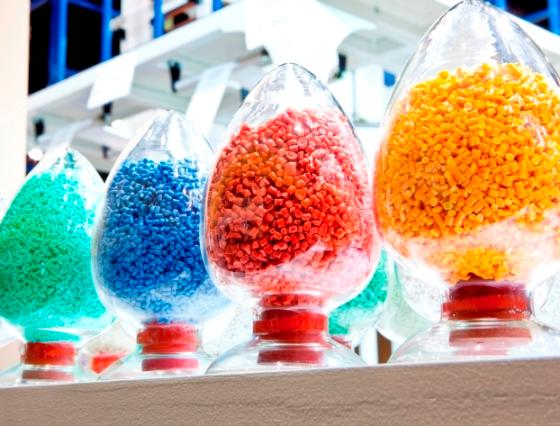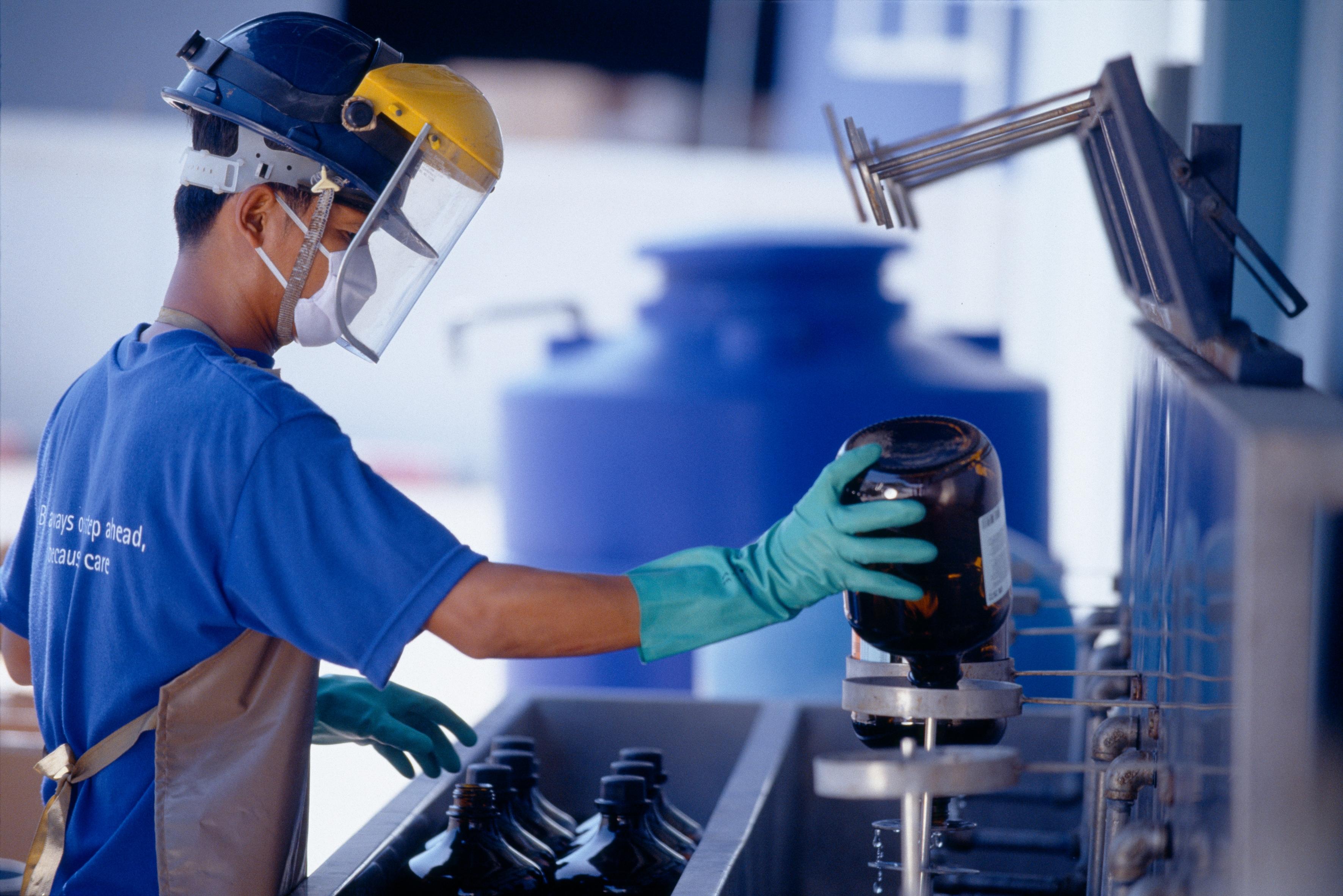Product Guide

Additive Masterbatches
Plastics are everywhere in our lives – our kitchens, our vehicles, our purses, and even inside our own bodies. Check out the many ways plastics can be found all around you:
- Acrylonitrile butadiene styrene (ABS): Cases for electronics such as computers and monitors
- High impact polystyrene (HIPS): Vending machine cups, food packaging, refrigerator liners
- High-density polyethylene (HDPE) plastic #2: Beverage containers, cleaning product containers, shopping bags, cabling, pipes, wood composites
- Low-density polyethylene (LDPE) plastic #4: Produce bags, flexible food containers, shrink wrap, lining for cardboard, wire coverings, toys
- Melamine formaldehyde (MF): Cookware and dishes, moldings, toys
- Phenolics (PF) or (phenol formaldehydes): Insulation for electronics, lamination for paper, molding alternatives
- Polyamides (PA): Nylon materials, car moldings, fishing line, toothbrushes
- Polycarbonate (PC) plastic #7: Beverage bottles, DVDs and CDs, eyeglasses, traffic lights, lenses
- Polyester (PES): Textiles
- Polyetheretherketone (PEEK): Medical implants, aerospace parts
- Polyethylene terephthalate (PET) plastic #1: Beverage bottles, food film, microwaveable packages
- Polylactic acid (PLA): Biodegradable beverage bottles and dishes
- Polymethyl methacrylate (PMMA): Light diffusers for vehicles, contact lenses, Plexiglas
- Polypropylene (PP) plastic #5: Large and small appliances, food containers, auto parts, pipes
- Polystyrene (PS) plastic #6 :Foam products, food containers, CD and DVD cases, plates and cups
- Polytetrafluoroethylene (PTFE): Coatings for fry pans (Teflon) and water slides
- Polyurethanes (PU): Foam products for furniture and coatings
- Polyvinyl chloride (PVC) plastic #3: Toys, pipes, shower curtains, flooring, windows, food films
- Urea-formaldehyde (UF): Adhesives for wood, casing for electrical switches
- And many more…….
Color & Masterbatches
SUGOI Polymer’s color division is focused on satisfying your plastic coloring needs without bias.
You know color makes your products sell — we know that choosing a supplier who delivers quality color in your preferred mode is as important as selecting the right color.
You can rely on SUGOI Polymers to deliver consistent color every time and anywhere around the world with short lead times.
Our colorists share a global database of successful matches, which we combine with unequaled polymer knowledge to provide you with accurate masterbatches and precolored resins and compounds.
Your color can be custom formulated to meet your precise appearance target or selected from our palette of popular, successfully proven colors.
Conductive & Anti-Static Plastic Compounds

Chemical & Environmental Resistance of Thermoplastics
Conductive thermoplastic compounds offer reliability and value for applications that require dissipation of static charges, protection from electrostatic discharge (ESD), or thermal management.
Specialty compounds can be tailored to offer electrical properties spanning the surface resistivity spectrum from 100 to 1012 ohm/sq and formulated for injection molding or extrusion processing.
Multiple technologies are available to impart conductive properties into thermoplastic resins. Each offers different approaches to providing the exact degree of conductivity required for your application, whether anti-static, static dissipative, ESD protection, conductive, or EMI/RFI shielding.
In all-polymeric grades, conductive IDP polymers are alloyed with host resins, for others conductive particulate or fibers are combined with a base polymer to form a conductive matrix.
Understanding TPEs
Thermoplastic Elastomers (TPEs) are a class of polymers that, within their design limits, behave like thermoset rubber but that, above their melt or softening temperatures, are melt processable via thermoplastic processing methods and, unlike thermoset rubber, can be easily reprocessed and remolded.
The ability to process these materials with thermoplastic methods allows for design and fabrication freedom that thermoset rubber does not offer.
All TPEs are composed of crystalline and amorphous domains. Some are blends or alloys of crystalline and amorphous polymers, some are block co-polymers comprised of blocks of crystalline and amorphous domains along the same polymer chain.
It is the crystalline domains that act as the “heat-fugitive cross-links” that give TPEs their thermoplastic character and the amorphous domains that give them their elastomeric character. The crystalline domains are typically referred to as the “hard” phase and the amorphous domains as the “soft” phase.
Flame Retardant or Fire Resistant Plastic Compounds

High Temperature Plastic Compounds
Flame retardant (FR) plastics are essential to devices we use every day, providing a valuable tool in fire prevention.
In order for fire to occur its three basic elements (fuel, heat, and oxygen) must exist.
The science of flame retardance uses chemical reactions to moderate one or more of these attributes.
Flame retardant compounds help mitigate fire danger
- Increase plastic’s ignition resistance
- Reduce the speed of flame spread
- Reduce heat release
- Reduce smoke & fume generation
Our engineers have the expertise to formulate compounds that comply with FR specifications and constantly-changing regulations while also meeting the performance criteria that are necessary for your application to succeed.
High Temperature Plastic Compounds
High temperature thermoplastic compounds offer significant retention of physical properties, along with dimensional stability and excellent electrical characteristics, at increased temperatures.
Leading Manufacturing Companies develops these compounds to your specifications; each may be modified for flame retardance, wear resistance, conductivity, structural reinforcement, and color. High temperature resins also offer better chemical resistance than most other polymers.
When specifying high temperature compounds, do not rely solely on test data; the data is generated from specific tests that do not directly correlate to end-use part performance. Successful application designs account for the balance of load/temperature/time, allow for creep (strain over time), and include appropriate safety factors.
Structural & Reinforced Plastic Compounds

Structural & Reinforced Plastic Compounds
Structurally engineered thermoplastics are an excellent alternative to metal in applications where strength, dimensional stability, and toughness are important.
Reinforced compounds offer dramatic improvements over neat resins in stiffness, tensile strength, load-bearing ability, and other properties — including short-term temperature resistance.
Specialty compounds give product designers freedom to utilize lower cost, lighter weight parts processed via injection molding — which is excellent for part consolidation and complex geometries.
Structural compounds are available in all commodity and engineering resins and can incorporate other benefits such as color, lubricity, conductivity, or flame retardance in a single material.
Custom grades are available that provide many unique properties, such as density modification up to 11 g/cm3, improved adhesion for plating processes, absorption of radiation during x-ray imaging, or have our engineers tailor a plastic compound to meet your requirements using additional additives and modifiers.
Wear Resistant & Low Friction Thermoplastic Compounds
Internally lubricated thermoplastics eliminate expensive, time-consuming, secondary operations associated with external surface lubrication. They keep mechanisms and components clean, enhancing long-term performance and reliability.
Wear resistant compounds mix friction and abrasion reducing additives with plastics to offer protection from surfacing marring and scratching, reduction in noise between mated parts, and elimination of the slip/stick phenomenon that occurs with sliding parts.
Plastics offer excellent oxidation and corrosion resistance
to aqueous solutions, acids, and bases — all of which can destroy metal parts.
Our specialty compounds are formulated to balance the correct base polymer selection with the appropriate lubrication technology to meet your end-use requirements, additionally structural reinforcement, static protection, flame retardance, and color properties can be combined into a single material.
